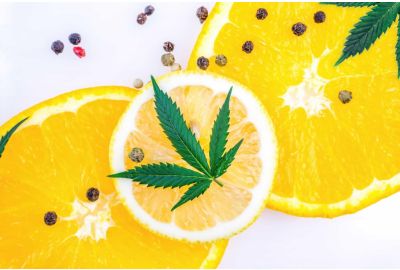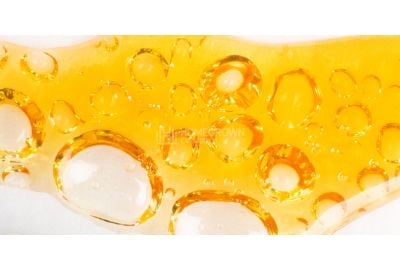A Comprehensive Guide on BHO Extraction & Its Risks
Concentrates are the future of cannabis consumption. We look into the art and science of BHO extraction, a popular way of deriving potent cannabis sauces known as HTFSE (high terpene full spectrum extracts).
You’ll also learn the history of BHO and why many commercial entities prefer the highly flammable butane gas to other hydrocarbons for solvent extractions.
Before we proceed, we can't state enough that butane gas embodies the term, DO NOT TRY THIS AT HOME. Many people have tragically lost limbs, homes, and even their lives after explosions. Find out the necessary safety precautions you must undertake if you want to run a BHO extraction system.
Let's roll.
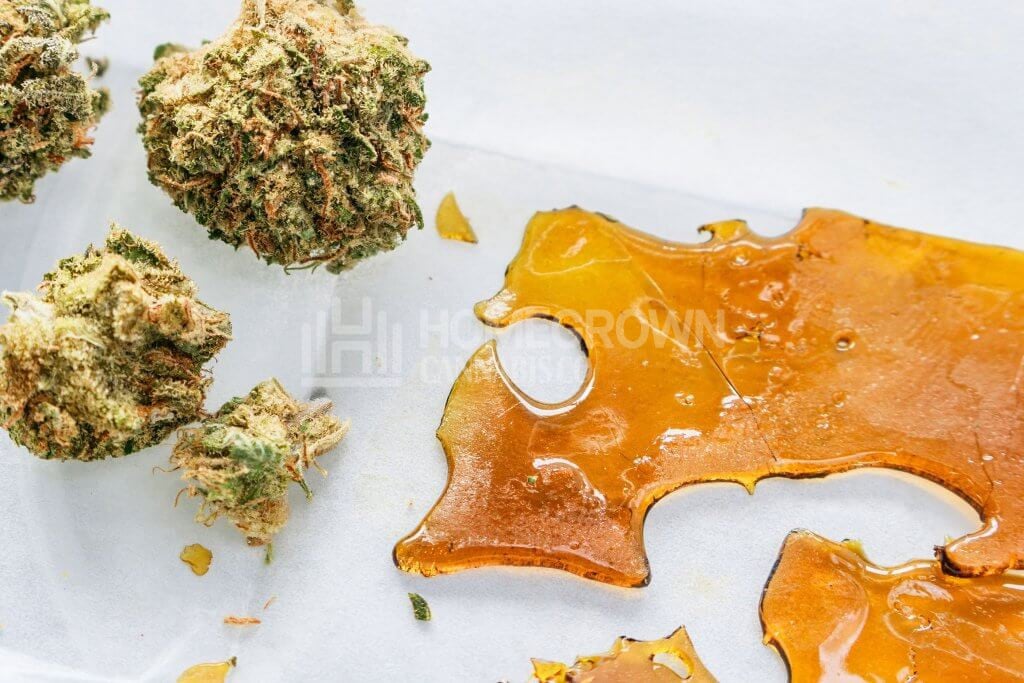
What is BHO extraction?
What does BHO stand for? BHO means butane hash oil—some describe it as butane honey oil because of how the resulting concentrate looks. As the name suggests, BHO extraction is a chemical process that uses butane gas to strip resin (essential oils and compounds) from plant matter.
We then filter out the plant matter and evaporate butane to get BHO concentrate—a translucent, glass-like substance that's dabbed or laced in weed.
Concentrates often have THC over 80%, making them more powerful than even the strongest marijuana flower in the world. Terpenes are organic compounds found in most plants like cannabis, producing complex aromas and flavors.
Propane and CO2 are also alternative hydrocarbons for the BHO extraction process.
What is the history of BHO oil?
Cannabis concentrates have a long history, from hash to modern-day extracted resin. The origins of BHO concentrates can be traced back to D. Gold's 1971 book titled “Cannabis Alchemy: The Art of Modern Hashmaking.” This publication described a solvent-based process used to make hash.
BHO extraction boomed in the late 90s with the advent of the internet. A 1991 article published on Erowid, an online database for psychoactive compounds, also described the “Hash Honey Oil Technique,” an open blasting BHO extraction system.
Butane is an extremely dangerous gas, and many accidents happen due to people not taking the absolute necessary precautions. We know BHO oil extraction is getting more popular because accidents appear in the news with more frequency.
Large-scale producers prefer to make butane hash oil due to its scalability and versatility. They also use a safer closed-loop extraction method that captures residual butane in the air and recycles it.
How is BHO concentrate different from other concentrates?
BHO concentrate is a popular solvent-based chemical extraction technique. Solventless extractions can include kief, rosin, pressed hash, bubble hash, ice water hash, and hash oil.
There are many types of BHO, ranging from shatter, budder, or oil with a fuller chemical representation of the strain’s original profile.
Butane hash oil contains no vegetative material and few tars or other carcinogens. The extraction process kills bacteria, mold, and fungi present in the source material.
Butane strips resin from the plant, and the gas evaporates, leaving behind cannabinoid-rich BHO oil that can have up to 90% THC concentration. Other common solvent extractions following a similar process are propane (PHO), CO2, and ethanol (EHO).
CO2 is safer, but the technique is time-consuming, resulting in a less flavorful product that’s 50 to 75% THC. Propane is a bit pricier and leads to a more viscous concentrate such as budder, unlike shatter for BHO. Ethanol extraction is new to the industry.
BHO extraction equipment is inexpensive, easy to obtain, and the extraction process is highly efficient, but dangerous.
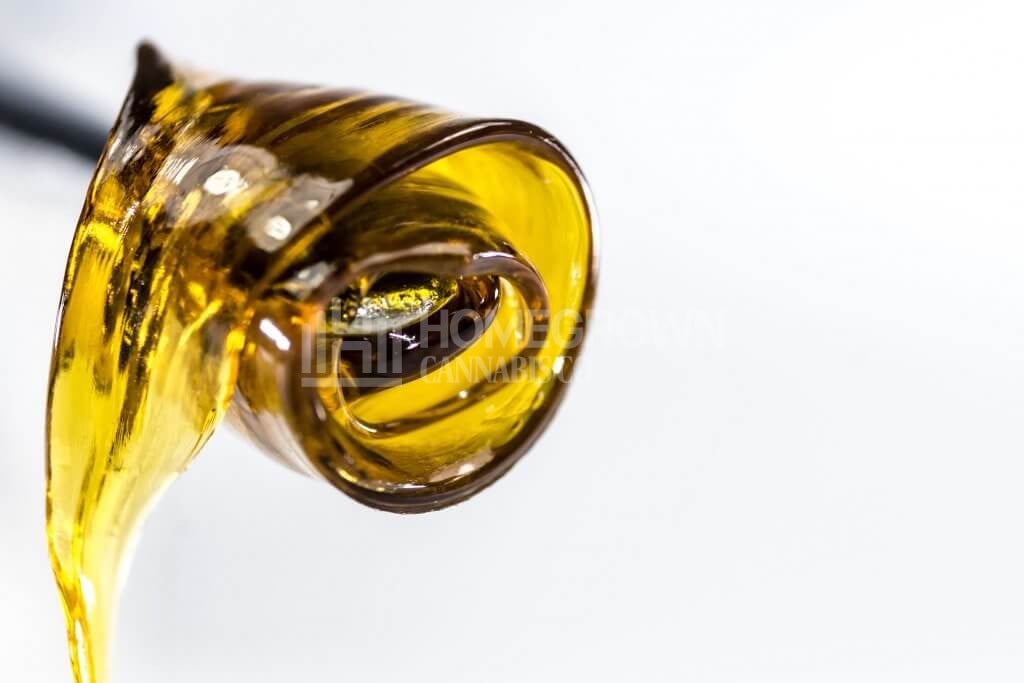
How do you consume BHO cannabis?
BHO concentrate requires decarboxylation through heat to activate chemical acids like THCA into their parent cannabinoid compounds of THC. THCA is a non-psychoactive cannabinoid found in marijuana plants.
Consuming raw BHO doesn't make you high, and it can be dangerous. Raw flowers typically test between 15 to 20% THC. BHO oil extract offers one of the most psychedelic experiences because it’s a condensed dose of cannabinoids, sometimes testing at up to 90% THC.
Instead of smoking a whole bowl or joint, just a dab of concentrates is enough to give you the desired effect. Here are some popular options enthusiasts use.
Dabbing
Most users in search of strong effects smoke BHO extracts through a dabber or banger, a needle-like metal, quartz, or glass that holds the concentrate.
Take a blow torch, thermometer gun, or e-nail to heat the dabber for about a minute and let it cool for around 30 seconds. Drop a small dab of BHO concentrate inside the chamber and inhale the vapor.
Vaping
You can also use vape pens, cartridges with a battery, or disposable pens full of flavorful BHO cannabis extract. Vape pens can have pre-measured doses and quick heating of multiple temperatures.
Wait for about half an hour before taking another dab because concentrate is intense, and you’ll get a rush with every hit. You can dab 30 or 40 hits a day and still get higher. Newbies should start small and take it slow.
Infusions and tinctures
You can also infuse BHO concentrate into oils and tinctures. Edibles made of concentrates taste better because they’re more concentrated than canna oil/butter, so you use less.
Exercise caution when dosing because concentrates’ lack of overpowering flavor may trick you into thinking you're not using enough.

BHO extraction guide: how to make BHO
Open-loop extraction or open blasting is popular among BHO hobbyists, but it can be a very dangerous technique. Users place raw marijuana material inside a metal, plastic, or glass BHO tube extractor and push butane gas through to isolate cannabinoids from the plant material.
The highly flammable butane gas can dissipate into the atmosphere easier in an open blasting method. Ensure your BHO extraction tube doesn't have any holes by washing it with soap and water to detect any bubbles.
Closed-loop extractions remove the possibility of gas leaks by containing all flammable solvents within a piece of commercial-grade BHO extraction equipment. Closed-loop is safer and more effective than open-loop extraction, but the cost of setting up this BHO extraction system is high, and you need to be knowledgeable of the structure.
Open blasting BHO extraction isn't a complex technique, but we can't stress enough that you must be very careful when carrying out this process. Many potential extractors shy away from BHO due to the number of accidents recorded.
Here are the three steps you need to take to carry out the common open blasting BHO extraction technique:
Step 1: Preparation
When running a BHO extraction machine, the most important element is ensuring you’ve got good starting material with high THC and lots of resin. Fresh trim features lots of terpenes, giving the extract a stronger aroma.
Ensure the plant material is so dry that it can crumble in your hands because moisture prevents butane from blending well into the resin. Always start with cured buds or dry trimmings in your BHO extractor. Spread out plant matter to dry it in a place with good airflow.
Most extractors like to grind cannabis flowers as if planning to put them in a joint, but you can break up the bud or plant matter using your hands. The material shouldn’t be too coarse or fine. Remove as many stems as possible from the plant matter.
You can still use any plant part, including stems, sugar leaves, or even fan leaves to get resin. A nug run, or full flower, hand-trimmed bud gives the best BHO concentrate possible. Commercial entities usually get contracts to extract BHO resin from small, non-photogenic buds.
Pack the marijuana nicely but not too tight inside your tube. Most concentrate makers say glass makes the best BHO extraction tube because it's less risky, and the material doesn't react with the gas in any way. Make sure the tube you use is the right one with a needle attachment. This part is for the can of butane to fit perfectly at the top, sending gas through to the bottom.
Use a coffee filter to separate plant matter from the puddle of extract flowing into a non-stick dish.
Step 2: Extraction
The extraction process begins by loading dry plant material into your chamber. Once full, run a blend of hydrocarbon gasses through the preferred BHO tubes.
Ensure you blast refined butane outside or in a well-ventilated area. Never forget that this gas is highly flammable:
- Don’t smoke or use a lighter anywhere close.
- Keep your bong far away, and don’t light a joint.
- Don't flip the switch because it could make a spark.
- Do not plug fittings in.
Many find two butane cans are ideal for deriving extract from an ounce of BHO concentrate. Stop blasting gas into the chamber when the extract becomes clear, indicating that the plant matter has lost most resin. Open the valve and let the liquid extract fall onto a collection vessel slowly after filtration of plant matter.
Step 3: Purging
You don't want to smoke the butane mostly because it’s distasteful, so we purge it with heat. Butane poisoning from BHO is a rare occurrence, though, and side effects aren't that dangerous.
Put the collection vessel carrying your liquid extract into a bowl of hot water or on a heating pad to accelerate the evaporation of butane.
Scrape the resulting gooey resin from the plate. Most extractors use vacuum ovens to remove any remaining butane in the honey oil slowly. You can also learn to make a homemade vacuum chamber for the purging procedure.
Change air pressure and temperature to affect the concentrate’s consistency, making BHO wax, shatter, or sugar. Don't put your BHO extract into the oven for too long because you could bake off all the terpenes.
Vacuum purge with temperature ranging from 95–110℉. Low heat and pressures in a vacuum oven keep the BHO concentrate viscous, removing traces of butane for a longer period.
Wait for the muffin top to form and release the tension. Pressurize the chamber in stages, letting air bubbles pop and recede. Excessive negative pressure without release makes the honey oil brittle too fast. An excessively bloated, warm extract makes a huge mess to clean up if it sticks to surfaces.
The vacuum decreases atmospheric pressure inside the chamber, allowing chemicals to evaporate at lower temperatures compared to ambient air pressures. Pressure removes butane but maintains the potency and flavor of the extract.
BHO oil comes out nice and smooth when you purge correctly, with little to no synthetic chemical taste. Strong and fresh terpenes in weed can also mask the chemical smell better.
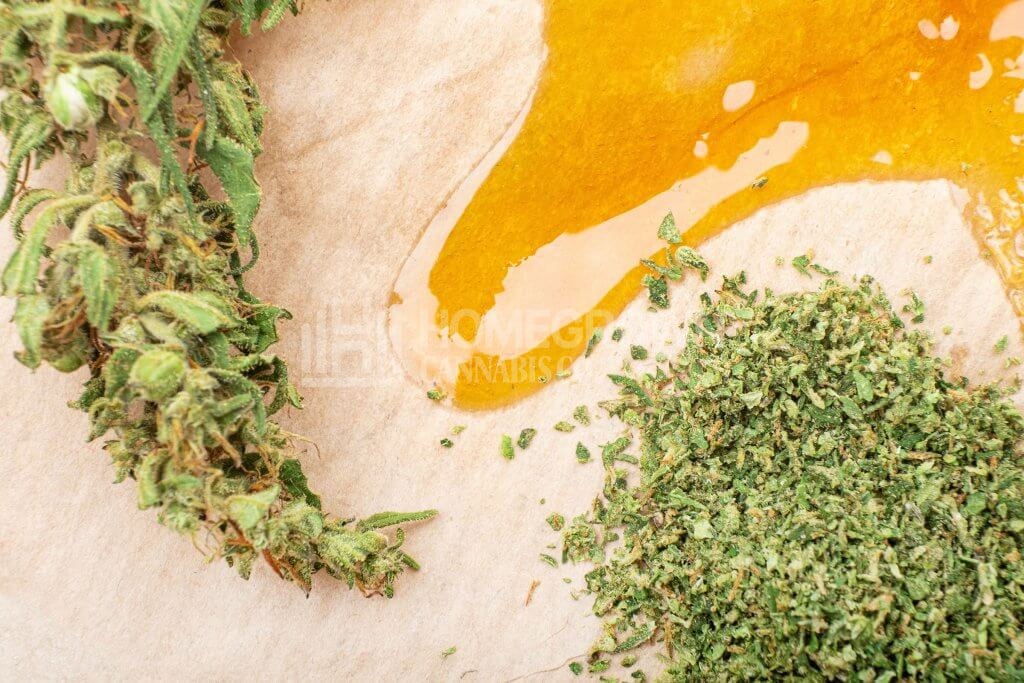
Six butane hash oil side effects
BHO concentrate isn’t as dangerous as some sources might make you believe. Governments, regulators, and associated news media have a huge hand in spreading misinformation because they’re tired of butane gas explosions.
Here are some realistic side effects many users report having after consuming BHO hash oil for a long time.
Side effect 1: Potent
BHO cannabis by-products offer one of the strongest and hard-hitting highs. The THC content of extracts usually ranges between 50 and 90%. New users of concentrates are prone to feeling anxious and paranoid.
Side effect 2: Addiction and tolerance
Many users say they don't feel much of an effect while smoking buds because they’re used to the high potency of BHO concentrate. This tolerance can lead to the user taking more every time.
Side effect 3: Bad taste
Ensure you purge all the butane from the extract using a vacuum chamber, or it can take a couple of days of air drying to purge the butane completely.
Purge all the butane to avoid inhaling it because it contaminates the BHO concentrate with a chemical taste and forms part of the extract's weight.
Side effect 4: Explosions
Butane honey oil keeps blowing up across the US literally. Accidents happen all the time because novice DIY users try to make butane hash oil without adhering to the necessary safety precautions.
Butane is a volatile and highly flammable chemical. Lighting a flame close to gas makes for a dangerous combination.
FAQs about butane extraction
Here are answers to some of the most common questions on BHO extraction.
What is the difference between BHO and CO2 extraction?
Most people have switched to propane and BHO concentrate for extracts because CO2 is low-yielding and time-consuming.
Here are the key differences:
| BHO | CO2 |
| Cheap | High initial setup cost and low yield |
| Quick | Time-consuming |
| Extract needs purging to remove distasteful butane | Pure, tasteless, clean resin |
| Highly flammable gas: risk of explosions | Let CO2 gas dissipate in the air without risk |
Are BHO and wax the same thing?
No. BHO encompasses all types of concentrate (hash oil, wax, budder, and shatter) extracted through butane. The temperature at which you purge the resin leads to these different by-products.
Wax from BHO looks like a honeycomb, thus giving it a strong association with bees’ wax. BHO concentrate is the most popular solvent hash, having taken over from bubble hash. Wax is also a substance excreted by cannabis plants to protect themselves from desiccation.
Shatter is characterized by its translucence and brittleness at room temperature. Budder has a softer texture.
What's better: BHO or CO2?
Choosing between BHO or CO2 is all a matter of preference. Butane is the most popular chemical extraction method for marijuana resin because it's a fast, accessible, and cheap technique.
CO2 works at lower temperatures than BHO extraction, preserving cannabinoids and terpenes better compared to BHO. CO2 is a natural gas, so it doesn't harm the environment, extractor, or consumer and can be recycled in a large-scale operation.
However, CO2 extraction is time-consuming and expensive to set up. BHO cannabis can have an unpleasant taste if not purged sufficiently or dangerous if the producer doesn't follow safety precautions.

Breaking bud—the art of extraction
We've learned that BHO extraction involves dissolving butane gas to get marijuana's active ingredients, cannabinoids, and terpenes from the plant matter. Evaporate the resulting solvent to leave resin behind that’s refined further into several products such as shatter, wax, and budder.
Always keep in mind that butane is highly flammable, as you don't want to go out with a bang. It's not just about the THC; it's about the TLC as well, so pay attention to details to get a remarkable product.
Start the journey of making world-class extracts by choosing resin-rich strains to give you lots of quality and flavorful BHO concentrate.
